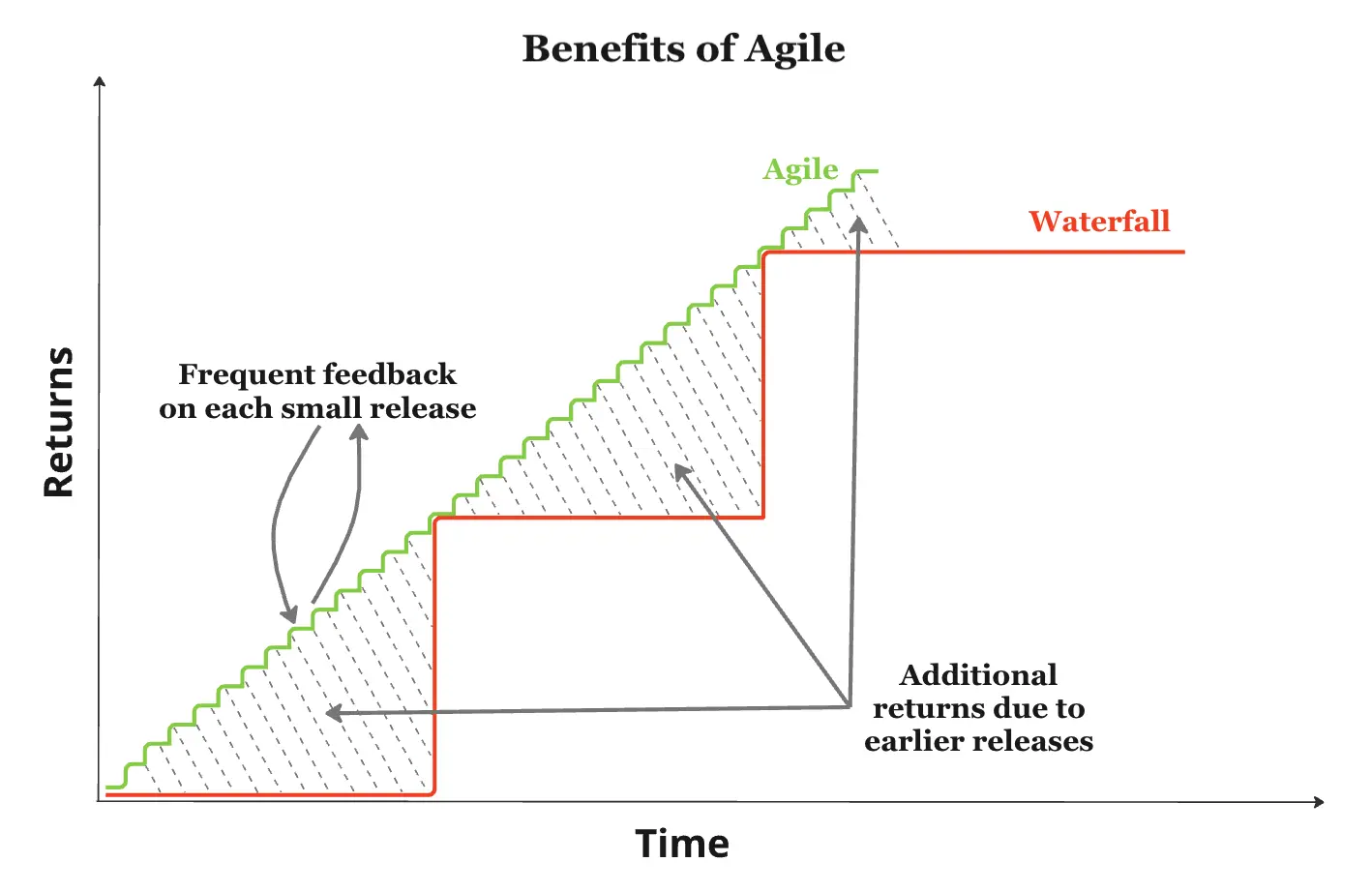The Agile Trap: When Efficiency Trumps Flexibility in the Cloud

Recently, I’ve been reflecting a lot on the dynamic interplay between Agile and Lean methodologies. My journey with Agile began nearly two decades ago, in 2006, when I earned my Scrum Master certification. Ever since, I’ve been a dedicated advocate for Agile principles.
The Rise of Agile
In its early days, Agile was presented as a universal solution, promising rapid and frequent delivery cycles. This was driven by three key objectives:
- Gather early and continuous customer feedback to fine-tune the product and reduce the risk.
- Deliver value incrementally to reap benefits and revenue in smaller chunks.
- Discipline to maintain high standards

The widespread adoption of the internet made Agile feasible. Software producers no longer relied on physical media, which often limited release cycles to a few times a year. The cloud-native ecosystem, fueled by Docker and Kubernetes, further empowered vendors to build large, distributed systems that truly embraced CI/CD practices and microservices architecture
The Limitations of Agile
However, my experiences over the past decade conducting Cloud Native Transformations and helping companies adopt agile practices have revealed that Agile is not always the ideal solution. In fact, it can often be detrimental.
Organisations that successfully implemented Agile methodologies eventually gravitated towards a more stable approach, resembling either a controlled waterfall or a consistent rapid delivery practice with CI/CD.
The initial phases of Agile adoption were marked by uncertainty and frequent change. But as products matured, the rate of change inevitably slowed, and the need to constantly adjust based on customer feedback diminished. While frequent delivery remained essential for maintenance and incremental innovation, the emphasis on constant change was no longer necessary.
The Agile Manifesto Revisited

Illustration - Agile Manifesto
The Agile Manifesto itself highlights four key preferences, with the items on the left valued more than those on the right. Upon closer examination, we see that the left-side items are more suitable for rapidly changing, unstable environments, while the right-side items are better suited for stable, slowly changing environments.
- Individuals and interactions over processes and tools. Cross-functional teams and frequent meetings are vital in the early, uncertain phases of a project. However, as a project matures and processes stabilize, these constant meetings can lose their value. Imagine a Scrum ceremony during sprint number 215 - is there genuine discussion or is everyone already on the same page? Advanced teams often recognize this shift and adapt by moving updates to asynchronous channels or even dropping unnecessary meetings altogether.
- Working software over comprehensive documentation. In the initial stages, the priority is on delivering functional software to facilitate coordination and progress. Experienced developers leverage Continuous Integration to avoid roadblocks caused by code conflicts. However, as the project stabilises and scales, onboarding new team members becomes the primary challenge. Detailed documentation and clear procedures are essential at this point. New developers shouldn’t be expected to decipher code intricacies; comprehensive documentation ensures everyone is on the same page.
- Customer collaboration over contract negotiation. Active customer collaboration is crucial in the early stages of product development to ensure product-market fit and identify valuable features. By rapidly releasing and gathering real-world feedback, we avoid guesswork and cater to early adopters who embrace frequent changes. However, as the product matures and gains a broader audience, stability and reliability become paramount. Users expect a polished experience, and frequent updates can disrupt established workflows. Established products like Gmail or banking apps exemplify this: users value consistency over constant change. The focus shifts to the vendor upholding their commitment to system stability and adhering to service agreements.
- Responding to change over following a plan. The need to respond to change evolves alongside the product. While the initial phases are dynamic and require adaptability, a mature product benefits from a more structured approach. Gathering requirements and systematically addressing them through a backlog resembles a planned approach, where most changes are anticipated. However, unforeseen circumstances like disruptive technologies or market shifts necessitate a return to Agile’s flexibility.
Embracing Lean
While both Agile and Lean are methodologies aimed at optimising productivity and delivering value, their core philosophies differ:
- Agile: Agile is all about embracing change and remaining flexible. It values delivering working software frequently in short cycles (sprints) and actively seeking customer feedback to adapt and improve continuously. The emphasis is on being responsive and adjusting course as needed.
- Lean: Lean, on the other hand, is centred around eliminating waste and maximising efficiency. It focuses on streamlining processes, optimising resource utilisation, and removing any activities that don’t directly contribute to delivering value to the customer. Lean strives for a smooth, predictable flow of work.
In essence:
Agile is about being adaptable
Lean is about being efficient
Finding the Right Balance
Every organisation needs to figure out when and how to apply Agile and Lean principles. Agile is best suited for the early, rapidly changing phases of a project, while managers should constantly monitor maturity and gradually transition towards a Lean and efficient approach. Agile can be wasteful when applied to mature systems, while Lean can be too restrictive for new initiatives.
In the Cloud Native world, being Lean and Efficient means optimising resource utilisation, automating processes, and eliminating waste to deliver value rapidly and reliably.
Are you ready to elevate your cloud-native platforms to a higher level of maturity?
- Assess your current practices and identify areas where maturity and adaptability can be improved. [^1]
- Invest in automation and policies that not only scale but also contribute to the platform’s maturity over time.
- Cultivate a culture of continuous learning and openness to change, which are essential for achieving and maintaining platform maturity.
By applying these principles, you’ll be well on your way to achieving excellence in platform engineering and guiding your platforms towards lasting maturity.
Ready to take the next step in your platform engineering journey? Our team of experts is here to help you navigate the complexities of building and evolving cloud-native platforms. We’ll work with you to set up a platform engineering team tailored to your organisation’s needs, ensuring your platforms achieve the maturity required for long-term success. Contact us today to unlock the full potential of your cloud-native platforms.









